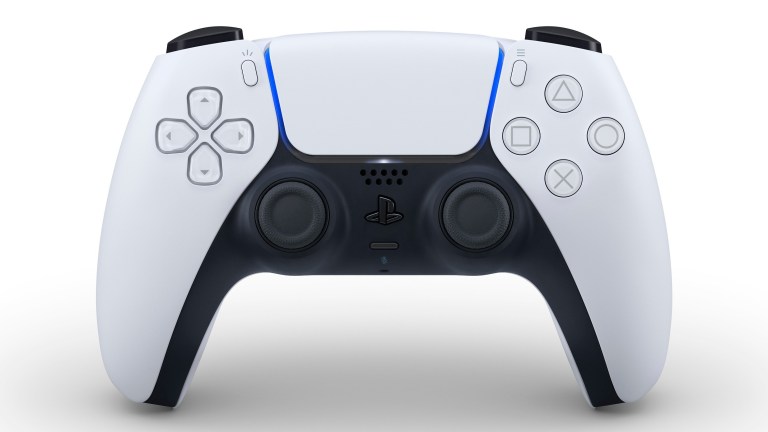PlayStation 5: Best Features of the DualSense Controller
The PlayStation 5's DualSense controller may be the most impressive example of next-gen design we've seen so far. Here's what you need to know about this surprising leap forward for Sony:

The PlayStation 5 has already made its way into the wild as media members, celebrities, and other industry figures already have their hands on the next-gen console and its DualSense controller.
Actually, it’s the DualSense controller that’s making the biggest impression so far. While early PS5 owners only have access to one next-gen title at the moment (built-in platformer Astro’s Playroom), that game effectively serves as a showcase for both the abilities of the PS5 console and the many ways that the console will be defined by the abilities of its controller.
That may sound sensationalist, but a quick rundown of the DualSense’s best features reveals why Sony’s new controller may just be next-gen gaming’s best.
DualSense’s Triggers Can “Fight” Against You
We’ve heard developers hype up the DualSense’s adaptive triggers, but the one thing that nearly every early preview of the controller talks about is that it’s hard to appreciate what they offer until you actually play a PS5 game that supports them.
That obviously makes it kind of difficult to relay the benefits of this particular feature via this format, but the most intriguing word we’ve heard from nearly every early PS5 preview is “fight.” The PS5 DualSense’s triggers don’t just offer resistance when called upon to do so; they’re powerful enough to actively work against you and make certain actions noticeably more difficult.
Granted, it doesn’t sound like the triggers will offer that level of resistance at all times, but the fact that they’re capable of that level of feedback at all is impressive.
DualSense’s “Haptic Feedback” Rumble Is More Than a Gimmick
Truth be told, I haven’t been impressed with a vibrating controller since the DualShock/Rumble Pack era. While Nintendo and others have promised more “responsive” controllers that offer accurate feedback based on what is happening in the game, we’ve seen few practical examples of that concept that actually excite me.
The PS5 DualSense looks to change all of that. Early impressions of Astro’s Playroom suggest that games that attempt to take advantage of the DualSense’s haptic feedback capabilities will be able to drastically change how the controller feels in your hand based on whatever scenario you’re in. In fact, some early PS5 owners say they were eventually able to close their eyes and tell exactly what kind of surface they were running on based on the feedback alone.
Granted, the future of this feature is going to depend on whether or not developers (specifically third-party developers) choose to take advantage of it, but with early PS5 games like Godfall, Spider-Man: Miles Morales, and NBA 2K21 already promising to offer their own variations of haptic feedback, it really feels like this level of quality could become the standard.
The DualSense’s Touchpad is Actually Useful
Remember the PS4’s touchpad? No? Well, that’s probably because few PS4 games bothered to use it as anything more than a (sometimes annoying) gimmick.
Actually, the DualSense touchpad’s biggest advantage is that developers are already bothering to incorporate it into their games. Early PS5 games like Astro’s Playroom, NBA 2K21, and Spider-Man Miles Morales intend to use the DualSense’s enhanced touchpad to let you do everything from open menus to swap between in-game activities.
It seems that Sony finally made a touchpad that’s reliable enough for developers to trust it as an additional input option that offers quick access to quality of life features. We don’t suspect that the DualSense touchpad will change the way you play games, but we’ll take any advancements that make things a little easier.
The DualSense’s Speaker is the Best Controller Speaker Yet
The idea of an official built-in controller speaker has been around since the Nintendo Wii, but console manufacturers have struggled to make them reliable and interesting. The biggest thrill they offer is when you realize that a developer even bothered to utilize the speaker in a noticeable way.
What makes the DualSense’s speaker different is the way that it works with the controller’s haptic feedback system. For example, Astro’s Playroom will often use the speaker in conjunction with changing vibration patterns to more accurately convey the feeling of a particular location. The speaker may relay the “crunch” sound of walking on snow while the vibrations and triggers offer increased resistance.
This is another one of those features that we could see developers abandon as time goes on, but it’s good to know that the DualSene’s speaker has the potential to offer something more substantial.
The DualSense is Large (But Intelligently Designed)
Fans of large controllers will be happy to hear that the DualSense is slightly bigger than the DualShock 4, but the real story here is how the DualSense compensates for its larger size.
By altering the angle of the triggers and making the controller’s handles slightly longer and thinner (at least to the touch), Sony pulled off the minor design miracle of making the DualSense feel sturdier, more aerodynamic, and more accessible.
A controller has to feel good in your hands before any of its other features can possibly matter, which is why we’re so thrilled to hear that the most innovative PS controller in years is actually comfortable to use.
